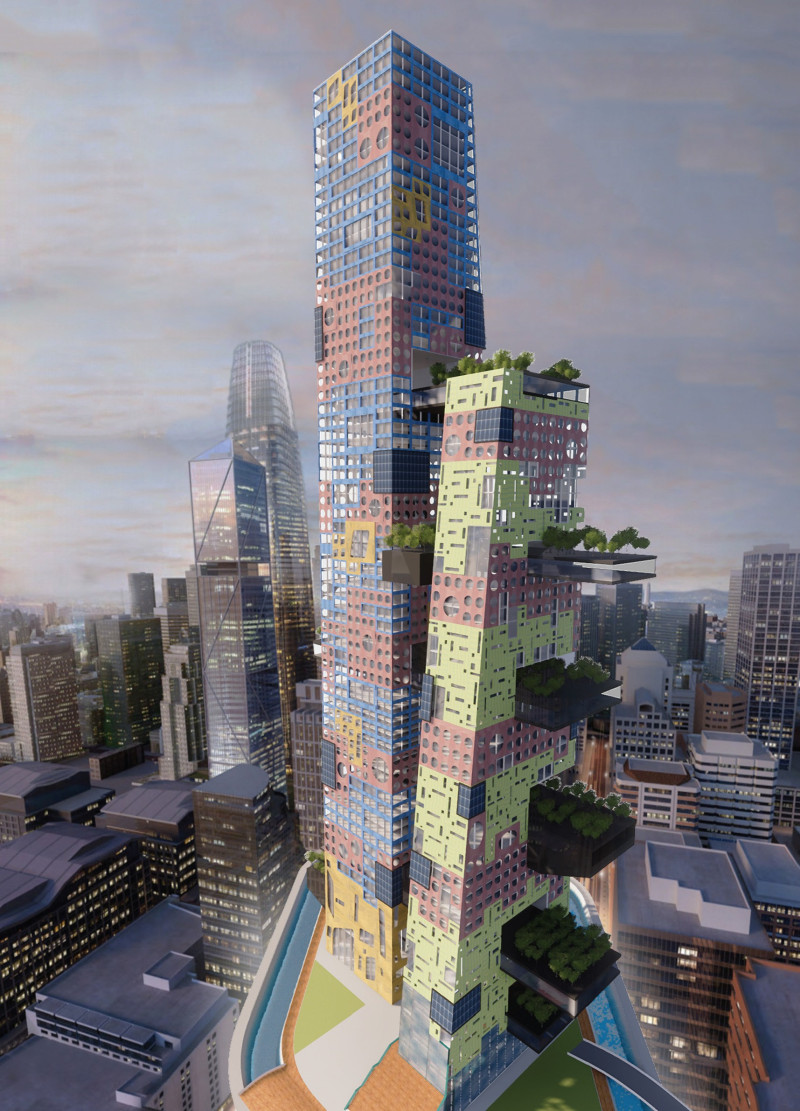5 key facts about this project
Community-Centric Design
One of the most significant aspects of the project is its community-centric approach. The layout features multiple towers that house artist studios, exhibition spaces, and performance venues, promoting interaction among artists and the public. This configuration not only facilitates artistic collaboration but also encourages visitors to engage with the arts in meaningful ways. The design allows for art displays to extend into public areas, enhancing visibility and accessibility, which is crucial for a dynamic urban setting like San Francisco.
The project incorporates outdoor spaces that function as parks and casual gathering areas, promoting social interaction. The design emphasizes pedestrian-friendly pathways, making it easy for the public to navigate the space and participate in artistic activities. This focus on accessibility aims to bridge the gap between artists and the community.
Sustainable and Innovative Features
The use of materials reveals a commitment to sustainability and innovation. Exposed concrete and glass dominate the façade, combining durability with aesthetic appeal. Steel elements provide structural support while allowing for unique design forms that reflect the building's artistic purpose. Green terraces and planters are integrated into the design, contributing to both the environmental performance and the visual identity of the building.
Technological components are incorporated throughout the design, with interactive installations and digital displays enhancing the visitor experience. The architects have employed energy-efficient systems, emphasizing a sustainable approach that aligns with current architectural practices. This dual focus on sustainability and technological integration differentiates the "Towers for Artists" from other projects in the area, setting a standard for future developments.
Exploration of Architectural Elements
For those interested in a deeper understanding of the project's architectural aspects, examining the architectural plans, sections, and designs reveals further insights into the thoughtful strategies employed. The interplay of light, space, and structure is carefully considered in each element, promoting not only artistic expression but also community interaction. Readers are encouraged to explore these architectural ideas to appreciate the complexities and intentions behind the design.
The "Towers for Artists" stands as a significant architectural effort to support and promote artistic culture in an urban setting. To gain a fuller appreciation of its design and functionality, review the architectural documentation for detailed information on technical specifications and visual constructs.


























